
What to Use for Sketching on Canvas
Many artists and painters like to sketch their ideas onto canvas prior to painting. But what medium should you use for sketching on canvas? We will talk about some different options below.
To retain a detailed sketch throughout the painting process use an H-grade pencil and seal it with a fixative spray. Use charcoal if retaining the drawing is not necessary. Other mediums can be utilized such as markers, pastel, ink, colored pencils, transfer paper, and even paint.
This only scratches the surface of what can be used for sketching on canvas. Below we go into more detail on some of the different methods available.
Sketching on Canvas with Pencils
Pencils are a very common way to sketch on canvas prior to painting. They can be used for oils, acrylics, or most any other medium. The great thing about pencils is you can do a fairly detailed drawing right on the canvas. This works great for paintings that contain any kind of precise anatomy, perspective, or if it's a complex composition. The thin lines and detail achieved will make sure you don't miss anything important, such as a button on a shirt.
The potential drawbacks (no pun intended) is that having a lot of tight, thin outlines can cause you to be more restrictive with your paint application. This can sometimes result in a paint-by-number look since your main objective is to fill in all those little shapes with color. This can be overcome by loosely sketching your idea on the canvas rather than creating perfect outlines.
When using a pencil to sketch on canvas, it's generally best to use an H-grade pencil, preferably a 3H or 4H since these have less of a tendency to smudge. To keep the drawing from smudging, you can apply a fixative spray or acrylic matte medium with a soft brush over the canvas and let it dry before you begin to paint. Be aware of the fact that if you use a more transparent painting method, pencil lines may show through the paint.
See the types of painting and drawing materials I use on the Resources Page.
Erasing Pencil on Canvas
If you are using an H-grade pencil, a kneaded eraser will erase most of the graphite, depending on how heavy the texture of your canvas is. If you are erasing graphite or charcoal on an oil-primed canvas, I recommend you dedicate an eraser for that task alone. There are other erasers that can work, but you must be careful since using them with a heavy hand could remove some of the primer on the canvas.
Sketching on Canvas with Charcoal

Another time-honored method us using charcoal to draw out your ideas on canvas prior to painting. If your objective is to only give rough indications of placement, proportions, and anatomy, and then let the paint do the talking, then this is the way to go.
The broad lines and temporary character of charcoal will not only help free you from a paint-by-number mentality, but it will also force you to rely more on your ability to draw with paint rather than just fill in shapes. This is a great approach for those who want to loosen up in their work.
Of course, the obvious drawback (pun intended this time) with charcoal is that it's messy. If you have a tendency to rest your hand on the canvas when you paint, you may end up with more charcoal on your hand than on the canvas. The charcoal can also blend into your paint, depending on your technique. I have not had many problems with this as I tend to paint somewhat thick, but if you use thin layers it may be an issue.

Different Types of Charcoal and Their Effect on Paint
There are different types of charcoal available on the market, but they mainly fall into two categories, vine charcoal, and compressed charcoal. Below is an example of using oil paint over vine charcoal and two different types of compressed charcoal pencil: a Prang charcoal pencil and a Mont Marte wordless charcoal pencil.
The lower right of each swatch was the thinned with mineral spirits, you can see how the effect is essentially the same on all three. I used Cadmium Lemon on the top of the swatch, Burnt Sienna on the right, and Ultramarine Blue on the bottom. I used the paint straight from the tube without thinning it.
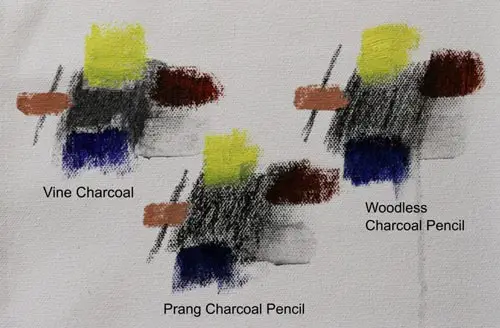
The first thing to note is how the vine charcoal, while not as dark, did a better job of covering the heavy texture of the canvas. You can see that all three did cause some pollution of the color, but as I brought the color away from the charcoal and into pure canvas, it dissipated fairly quickly. The Prang pencil seems to have more effect on the color.

Another option is using compressed white charcoal on a toned canvas. This charcoal tends to hug the canvas more, and since it's white, it doesn't seem to impact the paint as much, even when scrubbing in dark paint. You will need to tone your canvas fairly dark to be able to see the charcoal well. And it's essential to make sure the paint you used to tone your canvas is bone dry before you apply charcoal.
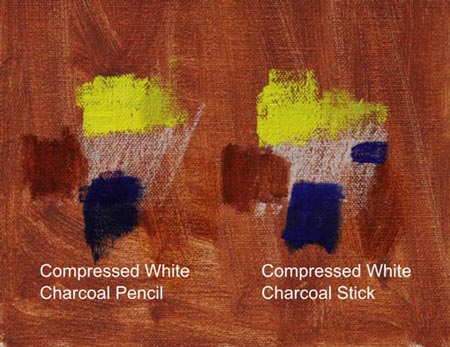
Other Alternatives for Sketching or Drawing on Canvas
Markers on Canvas
Some artists will use markers for their preliminary drawings. There are many different kinds from acrylic to Sharpies and these come in all array of colors. While I admit I've never used this method, the word is acrylic may be a better way to go since oil-based markers such as Sharpies can eventually bleed through the paint.
Pastels on Canvas
Pastels, while not optimal for doing a highly-detailed drawing, can work great if you want a loose approach similar to charcoal, yet with color. You will want to make sure that the pastel you are using is compatible with your medium. For example, you could use oil pastel with oil paint, but never with acrylic paint.

Oil pastels and oil sticks have a tendency to bleed into the subsequent layers of paint, especially if the paint is thinned (see above). This can be used to your advantage. Below I demonstrate blocking in the light and shadows in a portrait and using mineral spirits to spread the oil stick for a nice tonal foundation that can be painted over either wet on wet, or once it's dry.
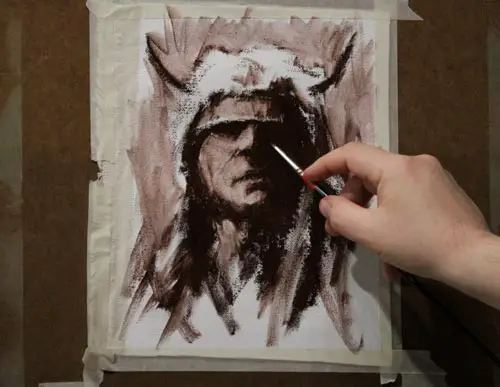
Ink on Canvas
Ink, such as India Ink is best used on a prepared canvas, with gesso or some other base. But ink has a nasty tendency to slowly bleed through the layers of paint and create a faint reminder of itself years later. To prevent this, seal it in with a couple of coats of clear matte acrylic spray prior to painting. Also, be mindful that ink is not at all forgiving when it comes to making corrections.
Colored Pencils on Canvas
Regular colored pencils have a wax base that can resist some paints. Watercolor pencils can blend nicely into the subsequent layers of paint, though you may want to limit using them with water-based paints only. Lighter colors will have less effect on your subsequent layers. Another nice thing about watercolor pencils is you can completely erase any lines by wiping them away with clean water and a paper towel.
Transfer Paper on Canvas
Whether you make your own or you purchase it, transfer paper such as graphite or carbon transfer paper is a great way to transfer a sketch or drawing onto the canvas. The lines it creates tend to hold out a little better on canvas than pencil or charcoal. And a sheet can be used multiple times.
My preferred method is to make my own type of transfer paper by applying charcoal (white or black) onto the reverse side of the paper that has my drawing. I then lay the charcoal-side of the paper onto the canvas and trace over the drawing. This method of applying charcoal tends to keep it on the canvas a little better than drawing with charcoal straight onto the canvas.
Paint on Canvas
This may seem a bit obvious, but if you are an oil painter using acrylic-primed canvas, you can do your sketch or preliminary drawing in acrylic paint. The advantage of this is acrylic's fast drying time, and the fact that it will not bleed into the oil paint once it's dry. Some artists will draw in pencil, seal the pencil lines by repainting over them with acrylic, then proceed to oil paint.
Should You Sketch Just Lines or Masses of Light and Dark?
You can do either one but bear in mind that if you are using a messier dry medium like charcoal or even pencil, having a bunch of excess graphite will cause more pollution of the paint. If you need to have those value masses, it is usually best to draw in your outlines, then mass in indications of value with thin paint before you get into the serious stuff.
Canvas Texture
Rougher canvas will be more challenging to draw on, especially if you are using a fine-tipped pencil. Erasing can also be difficult. For heavily textured canvas I would recommend a softer medium such as charcoal or a larger pencil, similar to a carpenter's pencil with a wide, blunt tip. Pastels, markers, or thinned paint can also work well with rough canvas. Avoid using sharp, fine tips like technical pencils.
Experiment with Different Techniques
Of course, there are many other techniques and options for sketching on your canvas that cannot be covered in this article. Hopefully, this will be enough to get you started and experimenting with your own techniques. Just remember the one unbreakable rule, oil over water, never the reverse. In other words, don't paint acrylics over oil pastels.
Please leave your comments or questions below and keep sketching!
Jason Tako is a nationally known fine artist who specializes in western, wildlife, plein air, and Historical Native American subject matter. He spent his learning years sketching the wetlands and wooded areas of rural Minnesota. He has been featured in Plein Air Magazine and Western Art Collector Magazine and he was the Featured Artist for the 2020 Southeastern Wildlife Expo. See his work at www.JasonTako.com and his demonstrations on his YouTube Channel.
Warning: Undefined array key "preview" in /home3/mysketc2/public_html/wp-content/plugins/oxygen/component-framework/components/classes/comment-form.class.php on line 75
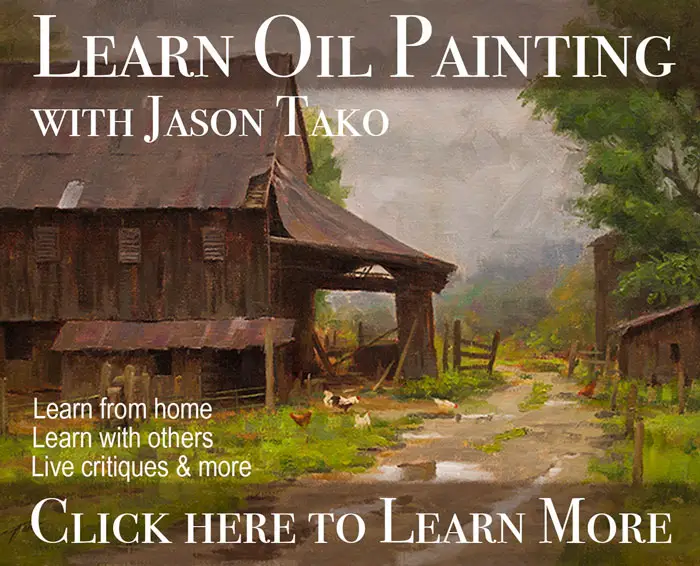
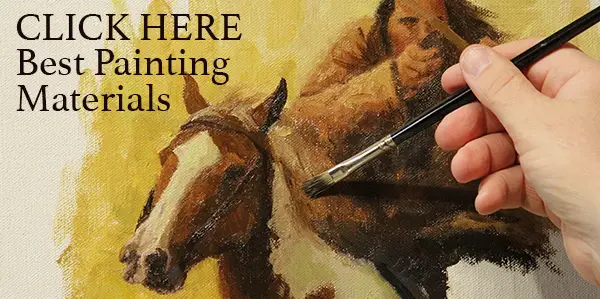
Warning: Undefined array key "preview" in /home3/mysketc2/public_html/wp-content/plugins/oxygen/component-framework/components/classes/comment-form.class.php on line 79